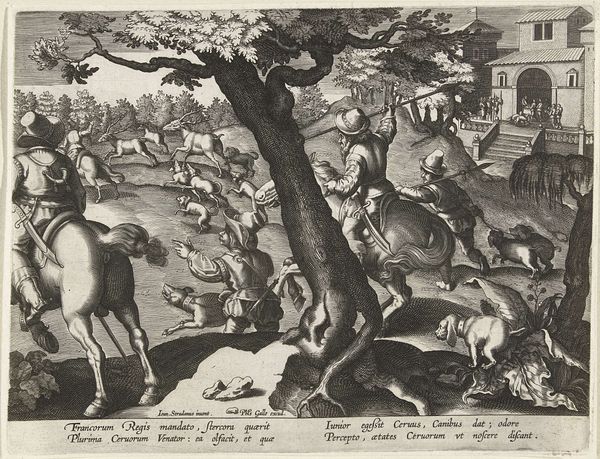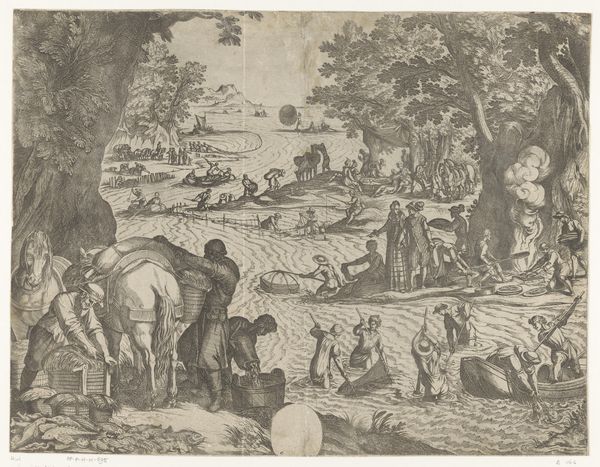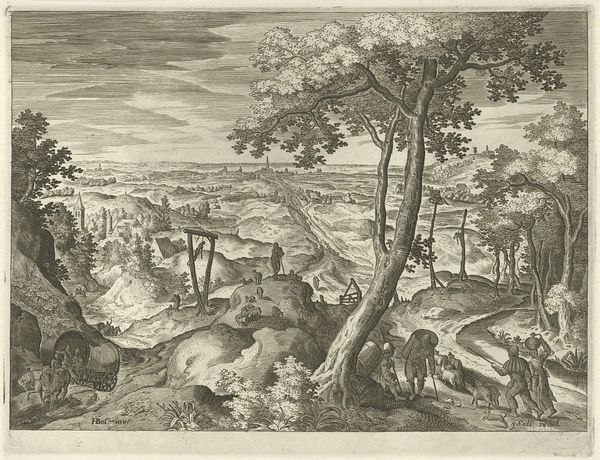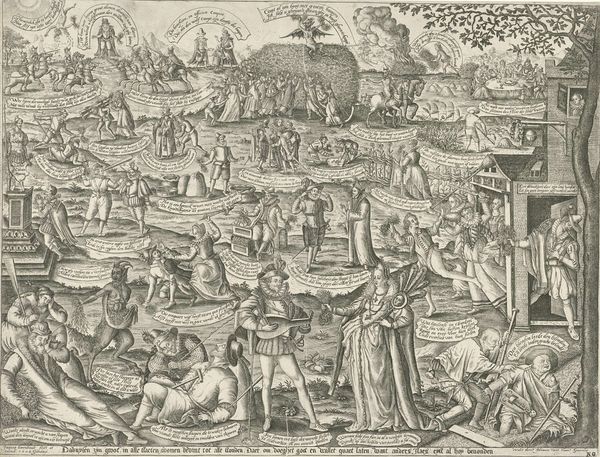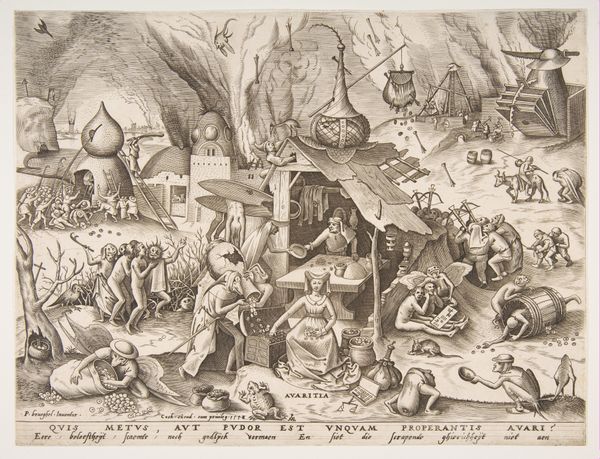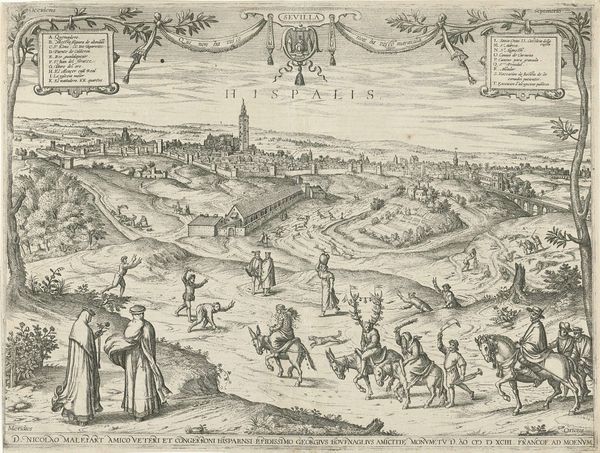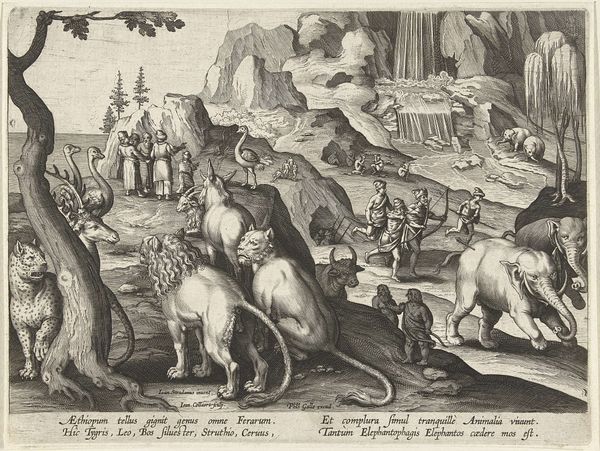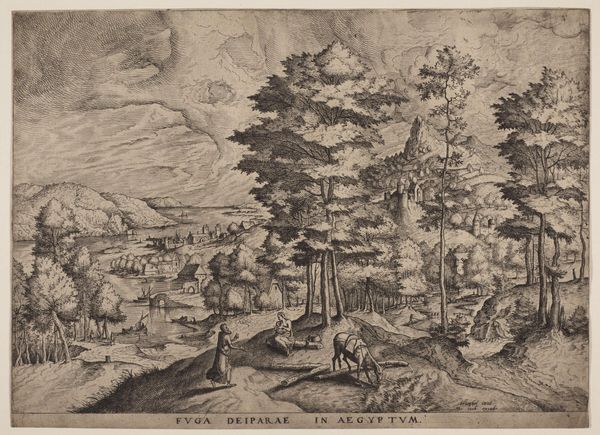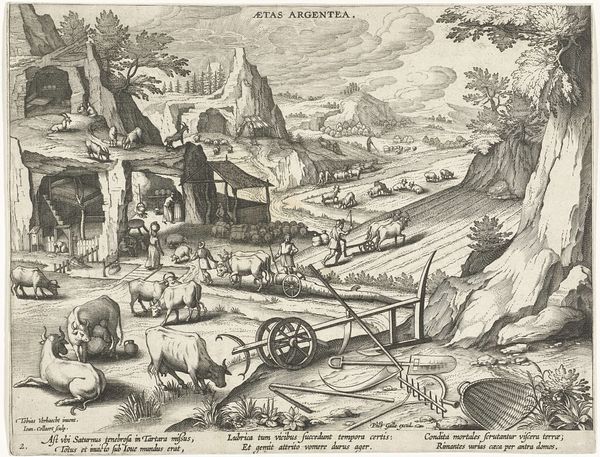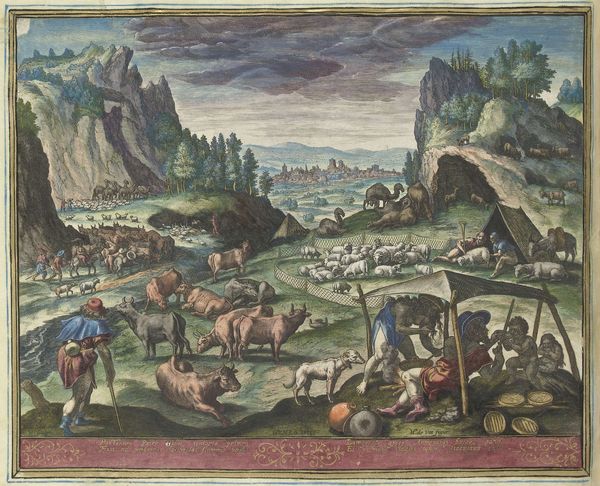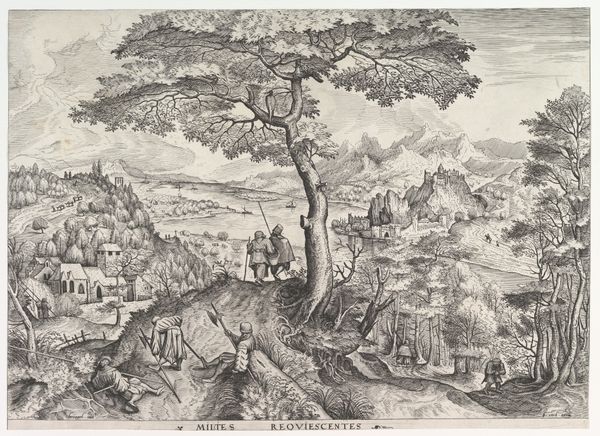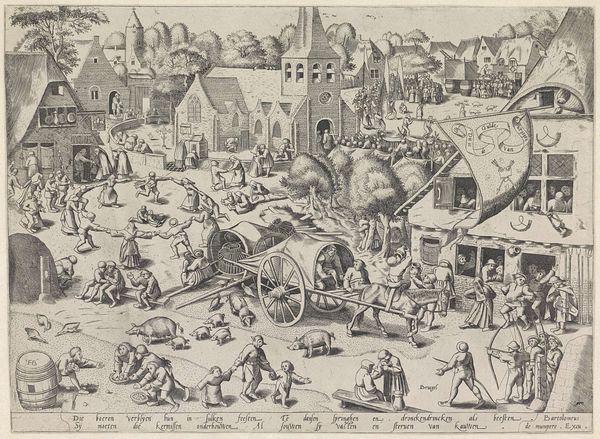
Stag Hunt of Elector Friedrich III the Wise 1529
0:00
0:00
painting
#
water colours
#
painting
#
landscape
#
figuration
#
11_renaissance
#
genre-painting
#
northern-renaissance
#
watercolor
Dimensions: 80 x 114 cm
Copyright: Public domain
Editor: Here we have Lucas Cranach the Elder's "Stag Hunt of Elector Friedrich III the Wise," made with watercolours around 1529. It feels quite dense and fantastical; all these little figures populating the landscape. What's your take on it? Curator: Look closely at the layering. See how the application of watercolor achieves a specific depth? Each stroke represents labor, decisions, and availability of materials in the 16th century. How does the deliberate portrayal of the hunt challenge traditional artistic values, especially concerning the representation of labor? Editor: So, you are suggesting the actual craft is as important, or more important, than what's being depicted. Is that right? How was the means of production involved with the context of the time? Curator: Precisely! The materials available and how they are manipulated - the watercolor pigment itself, the brushes, the paper. The layering of pigment indicates how Cranach may have understood landscape as both lived space and artistic construct, which reflected cultural ideas around nature. But how might the political context and Cranach's workshop influenced the choices that Cranach had made, like those color choices or how detailed some of the deer are? Editor: It's interesting to think of the painting as an artifact reflecting social hierarchies. Hunting would have been tied to aristocracy, of course. But Cranach was employed as court painter... Curator: Right, the consumption of the art sustains the social structure. Notice, if you will, how labor has been portrayed. Court painter or not, his production required skilled assistants, a material investment. What do you now perceive as you consider the networks that allow for the *Stag Hunt's* existence? Editor: I didn't think I could interpret a painting like that! Thinking of the materials and labor reveals so much about its relationship to society and power. Thanks for the insight! Curator: And I now realize how easily traditional lenses blind us to such things. Considering how we display it continues that network as well.
Comments
No comments
Be the first to comment and join the conversation on the ultimate creative platform.


